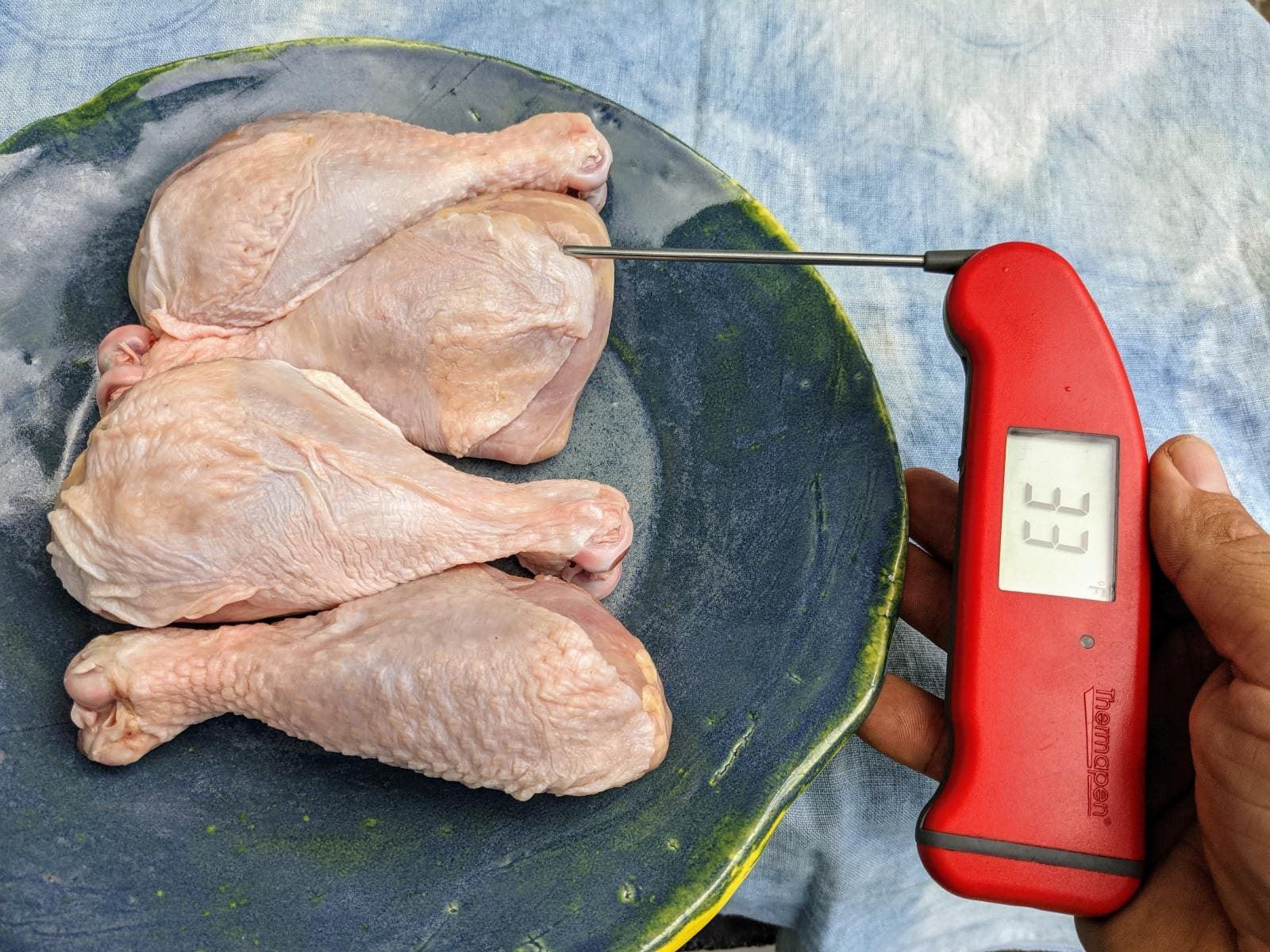Sometimes I get the question, what’s the best way to defrost this pasture raised chicken? The answer depends on how quickly you plan on eating it, so I’ll suggest a slower method and a quicker one. Both achieve great results and do it safely.
The Slow Lane
If you are a plan-ahead type person, one option is to place your chicken product in your refrigerator and let it thaw over time. For our packages of breasts, drumsticks, thighs, or wings, this requires about a day and a half to defrost. For whole chickens, you’ll need about three days.
Be sure to place your package in a bowl or tray to catch any drips if there are pinholes in the plastic.

Not many of us are planning our meals that far ahead, or have enough room to keep several days-worth of meals defrosting. I certainly don’t have my act together like that. My meal prep planning horizon is much shorter. For people with more chaos in there lives, there is hope. Read on…
Before You Leave For Work
If you want to have something defrosted and ready by the time you get home from work, here’s the best way accomplish this. Before you leave in the morning, simply submerge your package of chicken in a bowl or pot of cool water, then place it in the fridge. This will defrost small packages within 3 hours. Whole chickens will thaw within 8 hours. When you arrive home in the evening, everything will be set for you to get right to cooking.
Since the chicken and the water are both refrigerated, there’s no harm in leaving everything in the fridge longer. So if your plans change, just leave everything in the fridge and you can postpone that chicken dinner to another night. If the package leaks and the water turns pink, I’d recommend pouring off the water and continuing to store the chicken in the refrigerator with a tray or bowl underneath to catch any other drips.

How Do I Know It is Thawed?
Think the meat is ready? For our packages of chicken cuts, simply press down and twist with your fingers to test it. You’ll know it is ready if the meat feels pliable and there is some flex all through it. Whole chickens can be a little trickier, as the outside can defrost while there’s still a bit of ice in the center.
An instant read thermometer answers the question definitively. I’ve used one in the photo below for demonstration purposes, but I normally just rely on my hands. I prefer not to make too many holes in the chicken prior to cooking. When roasting or grilling, you’ll notice a lot of moisture seeping from these punctures. I haven’t done side by side studies to prove this, but I suspect that extra holes early in the cooking process lead to drier chicken.

What If It Is Still Frozen?
So what should I do if the kids are hungry, the grill is hot, and the package of our chicken still has a little ice in the middle? Do I need to wait for it to thaw fully?
It depends on what you are cooking. Here are some scenarios to consider:
- If you are roasting one of our whole pasture raised chickens in the oven, you can actually roast them from an entirely frozen state. I don’t prefer this method because I lose some options for brining or seasoning the chicken, but you can indeed roast a chicken from ice to finish in the oven. Just start with a lower than normal roasting temperature, about 350 degrees, and then finish it with a bang at the end at 400 or higher to get some crispness in the skin. The process takes longer than normal, and you’ll need a thermometer to be sure you’ve reached the right level of doneness.
- When cooking drumsticks or thighs, a little ice in the core can be cooked out in the oven or on the grill. Pasture raised chickens use their legs more than barn raised chickens, so these cuts are best when slowly cooked to 180 or 185 degrees. Because pasture raised chickens have more collagen, there is less risk of overcooking the legs. If you are working with partially frozen chicken just take your time, use your temperature probe, and things should work out fine.
- For wings, I’ll have to be honest and say I don’t know. I’ve always found that wings are small enough that they defrost quite quickly. Maybe I need to cook some more wings in the interest of science and report back.
- Chicken breasts, from the food safety point of view can be grilled, roasted, broiled, or pan fried from a partially frozen state. However, from the palatability perspective, I’d recommend against trying to cook a partially frozen breast. They are the trickiest cut of chicken to get right. It is too easy to overcook the outside while waiting for the frozen core to get up to temperature.
I hope you can use this information to feel comfortable and confident in defrosting chicken. If I haven’t answered all your questions, please let me know. I’m always looking for ways to improve the information we present about our farm’s pastured poultry and grass fed beef, so keep the questions coming!
Further Information
Want to learn more about our farm’s Certified Organic, pasture raised chicken?
